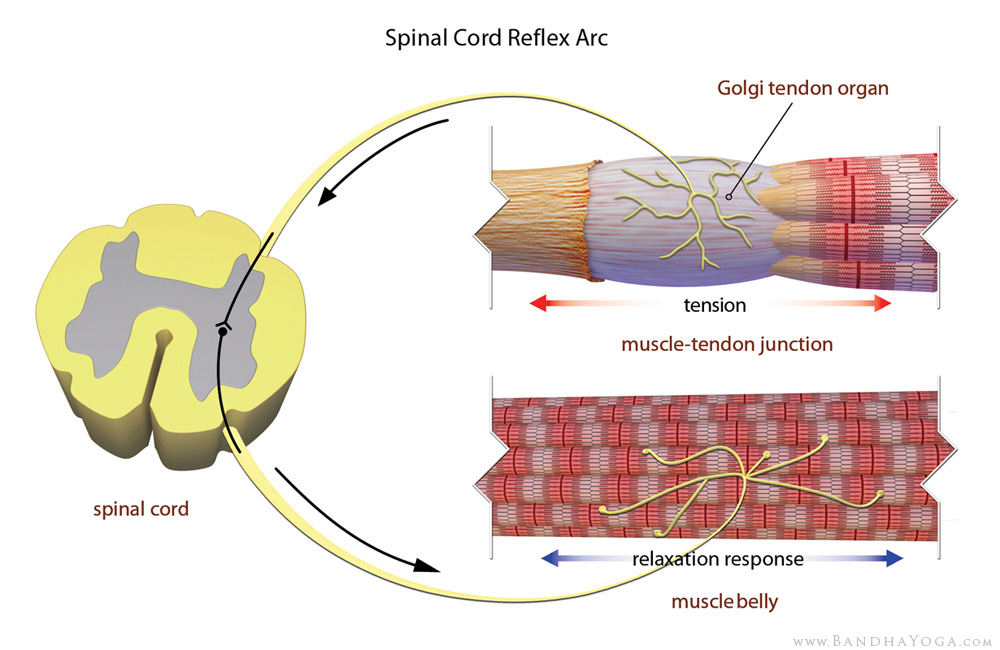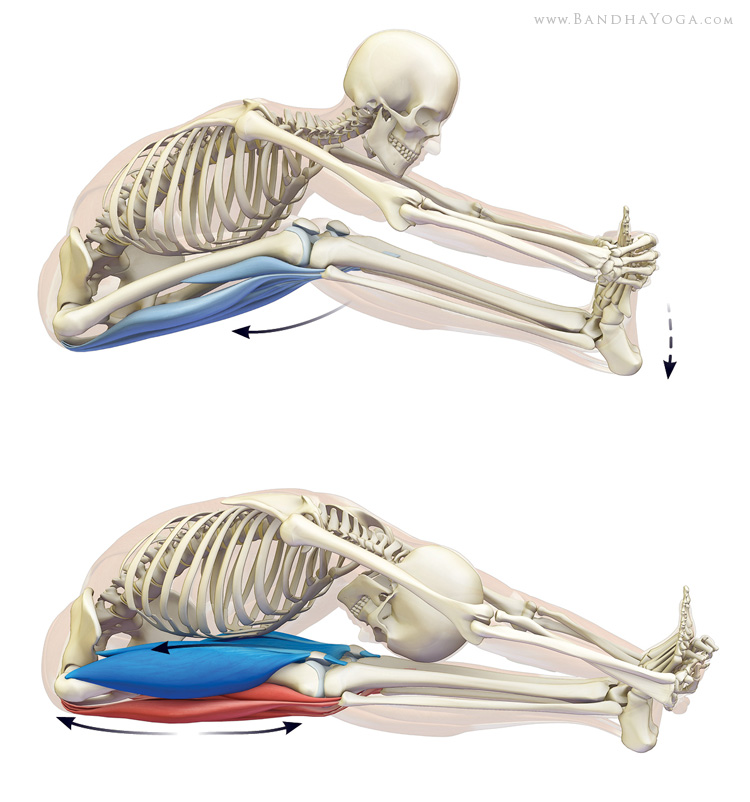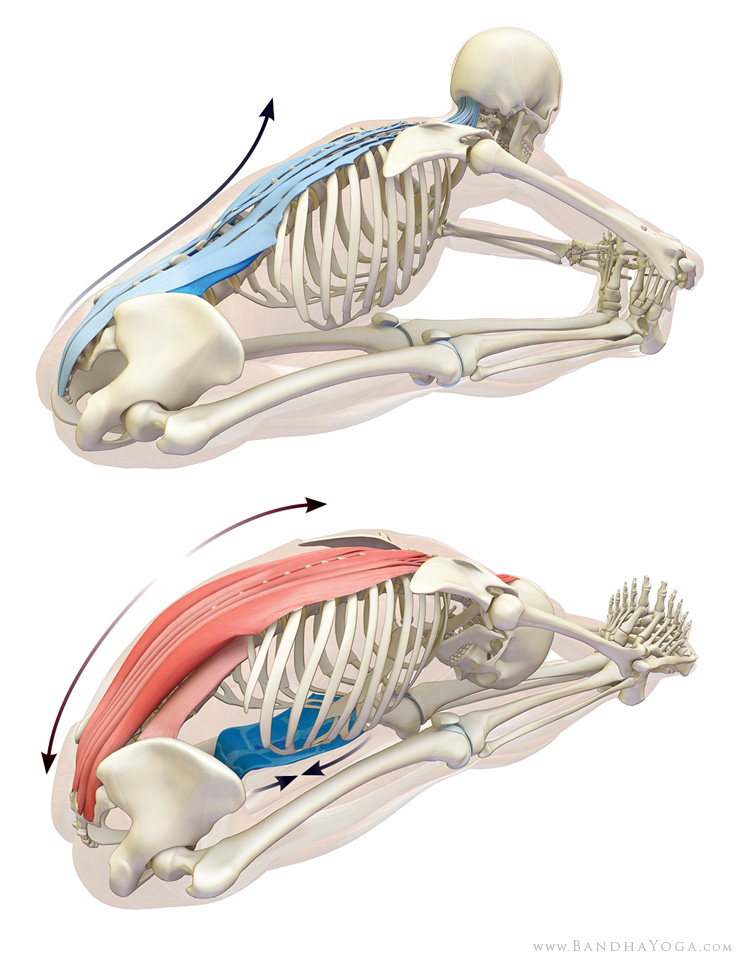

| Facilitated stretching involves contracting a muscle that you are lengthening. This increases the tension at the muscle-tendon junction and recruits more Golgi tendon organs than does stretching a muscle alone. Facilitated stretching causes the spinal cord to signal the muscle to relax, in essence, creating "slack" in the muscle. You can then take up the slack to move deeper into the pose. For example, in Paschimottanasana, slightly bend the knees and squeeze the trunk against the thighs. Then gently press the heels into the mat as if you are trying to flex the knees further. This engages the hamstrings and stimulates the Golgi tendon organs at the muscle-tendon junction. Hold this steady contraction for five to eight breaths before releasing it. This produces relaxation and increased length in the hamstrings. Then contract the quadriceps to straighten the knees and take up the slack created by the reflex arc. This has the added effect of producing reciprocal inhibition, which further relaxes the hamstrings into the stretch. |
 |

|
Follow the same steps in this pose with the quadratus lumborum and erector spinae. First, bend forward to stretch these back muscles. Hold the stretch by bending the arms, and then attempt to arch the back. This increases tension at the muscle-tendon junction of the erector spinae and quadratus lumborum, stimulates the Golgi tendon organs, and ultimately relaxes these muscles. Hold the arch of the back for five to eight smooth breaths. Then engage the abdominals and use the arms to draw yourself deeper into the pose, taking advantage of the new length created by the reflex arc. Activating the abdominals also produces reciprocal inhibition of the back muscles, relaxing them into the stretch. |
Go slowly with facilitated stretching. Allow about 48 hours of recovery time before re-applying PNF to any given muscle group. It is not necessary to use strong muscular contractions to experience the benefits of these techniques. Start with gentle force and learn to moderate the contraction, "dialing" it in. Use similar care as you gradually release the action of the muscles. Remember that improvement comes from a balance between the conscious work on the poses and the unconscious work that takes place between practice sessions. The unconscious mind forms new and more efficient brain circuitry during this "in-between" time.
Namasté,
Ray and Chris